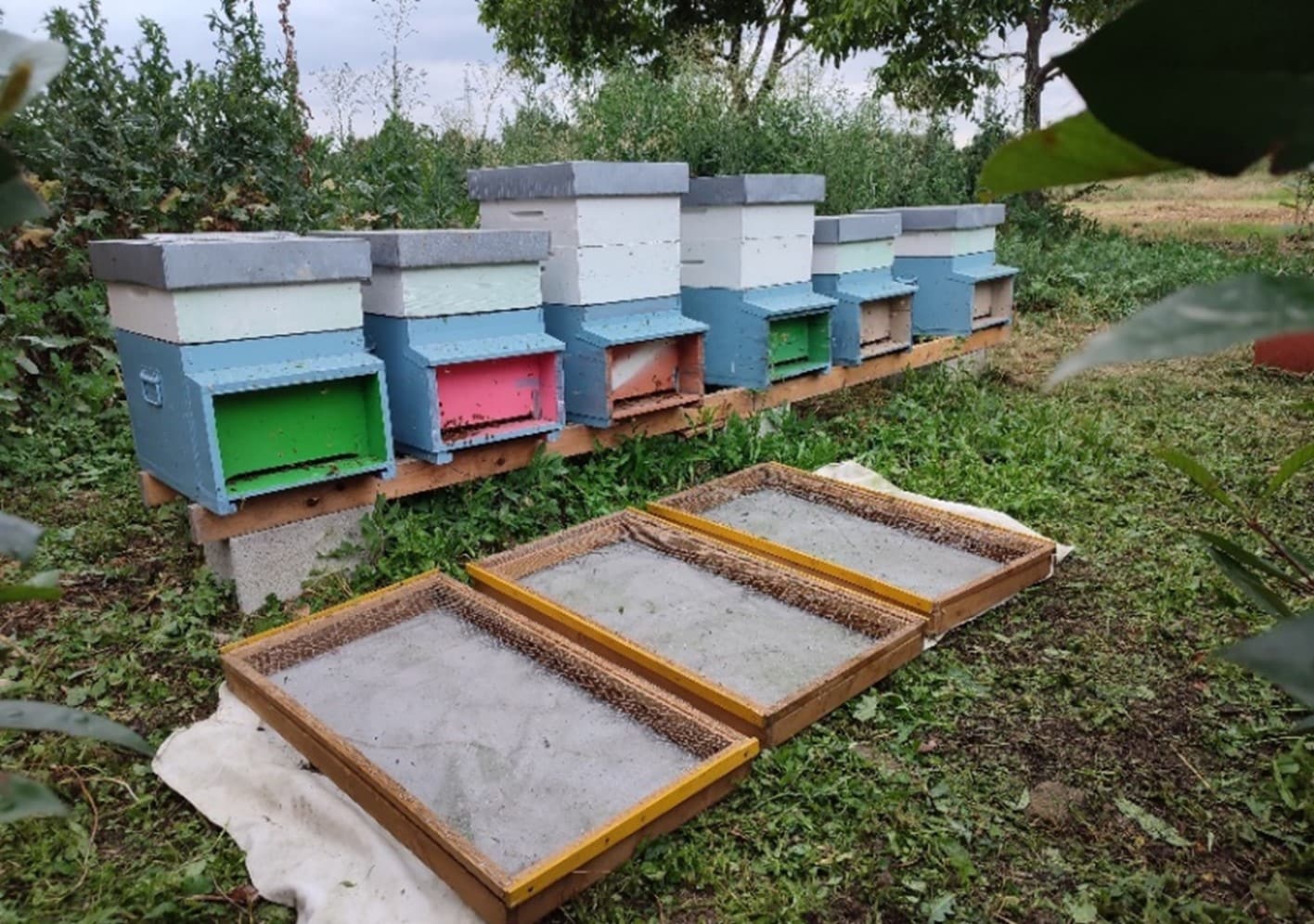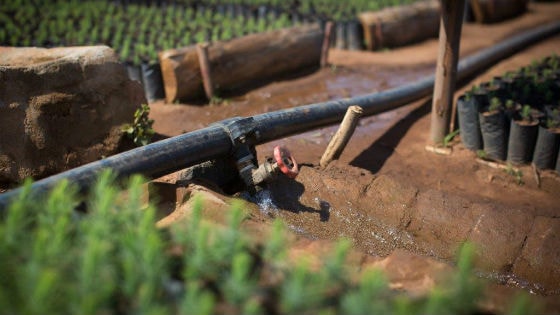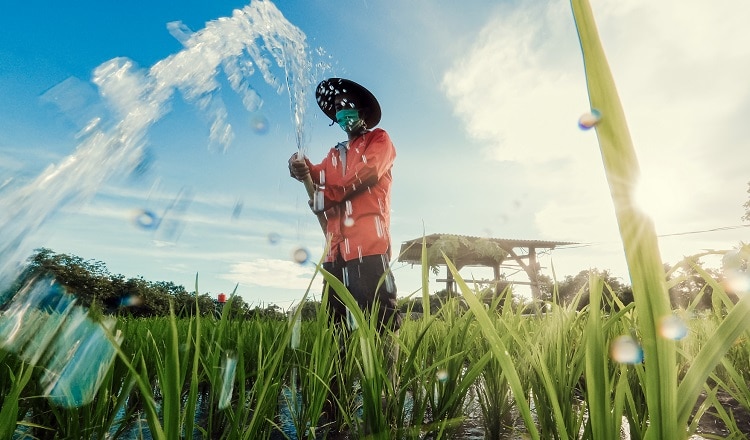PMI’s biodiversity ambition is to continue implementing initiatives and deploying new actions aiming to address the relevant pressures on nature we have identified within our area of influence. We do this in collaboration with local stakeholders and experts to expand the scale of conservation efforts. We aim to protect ecosystems across our value chain and achieve no net biodiversity loss by 2033.
In manufacturing, responsible resource management is crucial for long-term operational resilience. One notable initiative at Manufacturing & Technology Bologna S.p.A (MTB) is the biodiversity monitoring program. The MTB site includes a manufacturing development center in Zola Pedrosa, established in 1963, and a newer greenfield investment constructed in 2015 in Crespellano.
The state-of-the-art facility in Crespellano serves as the leading site for production technologies and manufacturing of PMI’s smoke-free products. This facility is distinguished by its high level of automation and technological innovation, seamlessly integrating sustainability principles throughout its operations.
Program objectives
The biodiversity monitoring program aims to assess the state of nature and the health of the ecosystem in close proximity to the factory, and to investigate whether our operations exert any additional pressure on the surrounding environment using honeybees as bioindicators.
Honeybees as bioindicators1
Bees are excellent bioindicators, as they can reveal pollution levels for the environment in which they operate due to their:
- Range: they have a wide flight range and high mobility, and this allows them to monitor a wide area, on average they conduct 12-15 trips per day (during their most active periods) covering approximately 7 km2
- Exposure to microparticles: during foraging trips bees are exposed to a wide range of contaminants in their environment, they can collect particles directly on their bodies or ingest them
- Exposure to other substances: a foraging bee population also collects honeydew, resin and water, which can act as additional samples of their environment
- Life span: They have short life spans which allow for recirculation within the hive and up to date analysis of the substances monitored
Environmental biomonitoring is a practice widely used to evaluate the health status of ecosystems, it uses organisms called ‘bioindicators’ that are capable of sensing alterations in the environment in which they live. Bees are widely recognized as excellent environmental sentinels, the project at MTB is based on this premise.
Phase 1 (2022-2023)
Due to space restrictions MTB engaged an external honey producer near the manufacturing facility and rented beehives for biomonitoring purposes. The program commenced in 2022 with seven rented beehives near the factory containing approximately 420,000 bees, analyses were performed on the honey and bees.
Phase 2 (2024 – Present)
In 2024, once additional space was allocated, a new set of six beehives was placed on the MTB premises and a new local beekeeper was engaged to support the program.
This phase uses a monitoring tool Melixa to monitor beehive conditions both internally and externally. Installed in one beehive, Melixa's sensors provide data on bee flights, internal humidity, temperature, as well as external conditions and rainwater volumes on a continuous basis. An electronic weight machine is also installed to measure honey production, a further indicator of bee health.
The entomologist conducts weekly checks on bee mortality and takes monthly samples of honey and wax from three beehives for laboratory analysis. Tests are conducted to measure the presence of heavy metals, chlorides, sulphates and nitrates, polycyclic aromatic hydrocarbons, agrochemicals, and pesticides which can be an indication of anthropic pressures such as crop cultivation, pollutants from vehicle traffic or pollution from wastewater. The remaining four hives are managed by a local beekeeper, solely for honey production.
To understand how a biomonitoring program with bees works, we need to know how a beehive works. It is a social structure with one queen with thousands of worker bees that exist to raise the queen’s offspring. Each worker bee performs its duty based on its age, collecting resources from the environment, the hive reflects concentrations of pollutants from the environment in which it is located.
Stakeholder engagement as a key enabler
Stakeholder engagement plays an important role in this initiative, particularly for the monitoring of the health of the hives and data collection. MTB’s manufacturing sustainability team initiated an engagement exercise to bring stakeholders in the area together to create awareness on the biomonitoring topic to leverage multiple data inputs to define a common dataset for analysis.
Education and awareness raising on the role of nature for employees and external stakeholders is a key part of this initiative. PMI’s 'Bee our Future' club conducts upskilling sessions on environmental sustainability, as well as regular community events include honey production workshops, tasting sessions, and an annual celebration on International Bee Day each May.
Results
Since the program's inception in 2022, the area surrounding the MTB site has shown good environmental health, with low contaminant concentrations related to PMI’s activities and bee mortality rates within the expected physiological limits2.
In Phase 1, the honey type (forest honeydew) indicated that bees foraged near the river close to the factory. Glyphosate, a widely used herbicide, was detected in honey samples and nearby water bodies. These findings confirmed anthropic pressures previously found in water quality and were submitted as part of the Alliance for Water Stewardship certification process, a standard which recognizes good water stewardship practices. Heavy metals and polycyclic aromatic hydrocarbons were also found in samples but were within critical limits for human health, primarily attributed to vehicle emissions. In Phase 2, the 2024 results confirmed the 2023 data, revealing the presence of two agrochemicals, a fungicide previously detected as well as new contaminants linked to pesticide use.
Next Steps
As the MTB manufacturing sustainability team deepens their expertise in biomonitoring, they are planning the next phase of the program which will explore the use of wild bees as innovative biomonitors and push the boundaries of Melixa's capabilities to continuously track additional environmental factors, like air quality. The team also plans to expand the biomonitoring program's scope by involving other organizational partners and coordinating with the University of Bologna.
PMI’s facilities employ innovative methods, such as this, to measure and minimize environmental impacts, allowing us to proactively prevent ecosystem damage in the areas where we operate. Ensuring we maintain regulatory compliance, prepare for emerging environmental legislation and maintain operational resilience.




